This site contains affiliate links. As an Amazon Associate, I earn a commission from qualifying purchases at no extra cost to you. Full Disclosure Here.
If you’ve looked into long-range shooting, you’ve probably come across the terms minute of angle (MOA) and milliradians (MRAD) when looking at rifle scopes. There’s a lot of confusion out there about these two types of scope, even among experienced shooters.
We’re going to clear the air around these two scope types and give you everything you need to know to decide which one is best for you and your next rifle setup. We’ll start with the basics and then do a deep dive into a comparison between the two to give you all the info you need to choose.
MOA vs MRAD – which is best for long-range?
Though both systems are still used, MRAD is much more common among shooters these days because it is easier to use in the field, provided you are familiar with the metric system. MRAD is the better option for new shooters, and definitely the place to start for those new to long-range shooting as a discipline.
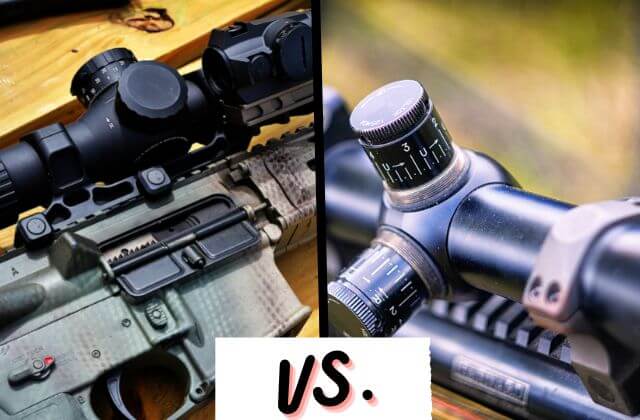
MOA scopes can certainly work, and are a fine option if you’re already familiar with the MOA system and imperial measurements, but at the end of the day there’s a reason that professional shooters from PRS competitors to military snipers use MRAD measurements and scopes.
MOA Rifle Scopes: Overview
MOA or minute-of-angle rifle scopes are the norm among hunting scopes, particularly in the United States. This is the more common option because the US uses Imperial measurements which means a minute-of-angle calculation is much faster and more efficient for those more familiar with yards, feet, and inches.
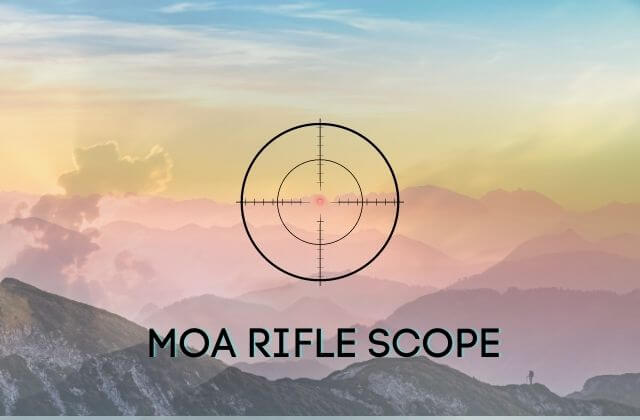
Minutes of angle are an ancient way of measuring the arc of a circle. You can thank the Sumerians and later the Babylonians for this one. Another name for a minute of angle is an arcminute, but you won’t typically hear that term in the context of shooting.
Like milliradians, MOA is an angular measurement, in this case, measuring the angle of difference between where your scope crosshairs are pointing, and where your bullet will actually arrive. We call this the difference between the point of aim and the point of impact.
A minute of angle is equal to 1/60th of a degree, which translates into a difference of 1.047” in point of impact per 100 yards, or about 1” of difference.
The reason MOA rifle scopes are so popular with those familiar with Imperial measurements is that for close range, you can do a simple 1 MOA = 1 Inch every 100 Yards calculation to figure out where your rifle is shooting.
If you’re an inch low at 100 yards, you need to come up 1 MOA, or usually four clicks of your turret, which will be in ¼ MOA increments. Simple right?
Also, if you’re shooting, say, a half-inch group at 100 yards, you know that’s a ½ MOA group (and you can brag about it in the long-range forums online).
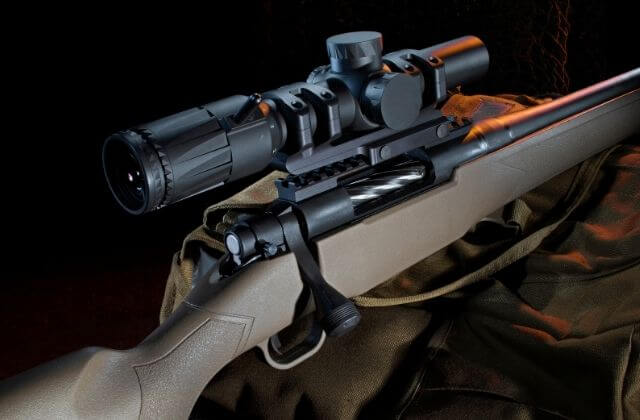
The problems with MOA come in when you start getting to longer distances and that 1” per 100 yards measurement no longer works. Remember, it’s actually 1.047”, and believe it or not that extra little bit does actually matter.
That little 5% difference can mean almost a two-foot miss at 1000 yards with something like a .308 Winchester, which is significant. That can be the difference between a bullseye and missing a target entirely.
Adding to this is the fact that some “MOA” scopes aren’t actually minute of angle at all…they’re Inches Per Hundred Yards or IPHY. This is especially true with shorter-range, hunting-focused scopes, and many shooters don’t realize there’s a difference.
Now, does that matter in the real world? Sometimes, yes, it does.
You’re almost certainly going to be using reference data of your own, as opposed to doing calculations based on what a ballistics chart says you should expect, so that 1.047” vs. 1” at 100 yards probably won’t impact your shot that much until you get to shoot at some extreme distances.
Still, make sure you’re accounting for that difference when you’re doing math on those truly long-range shots.
Also, some of the formulas for calculating your elevation get a bit unwieldy and require either a ballistics calculator or some skill with trigonometry to do it quickly and efficiently. This can be overcome with training, but it’s still more difficult to learn than MRAD.
MRAD Rifle Scopes: Overview
MRAD rifle scopes use milliradians, which in some ways, you can think of as the metric version of minutes of angle. A milliradian is 1/1000 of a radian, which is just another way to divide up a circle. A radian is 57.3 degrees, so there are 6.28 radians in a circle.
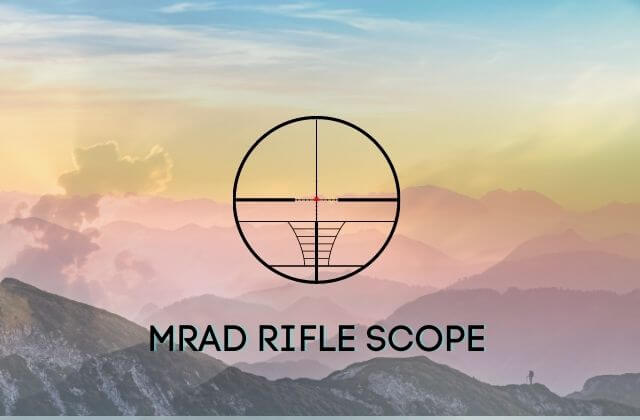
Another way of looking at a radian is the angle formed when you take a measurement between the center of a circle and draw lines to any two points on a circle that are exactly as far apart as half the diameter of the circle, aka its radius.
All of which sounds finicky, but it’s actually much easier in practice to use milliradians overall, which is why police and military snipers almost exclusively use MRAD scopes and measurements.
You might find some local PD somewhere that uses MOA scopes and callouts, but in general, professional shooters use MRAD because, assuming someone is equally skilled in both systems, it’s much faster to use in real-world situations where every second counts.
The other big advantage to an MRAD scope is that using the metric system is just…easier. Instead of doing quick mental math, or whipping out a calculator, much of the work can be done just by moving the decimal point because everything is base ten.
Instead of 12 inches in a foot, 3 feet in a yard, and 1760 yards in a mile, you have much easier 100 centimeters to a meter and 1000 meters to a kilometer, and that’s basically it when it comes to the metric math.
Now, much of this doesn’t matter much either way because we don’t call “missed six inches left”. We say, “missed 6 MOA left” or “missed 2 mils left”. The actual distances aren’t nearly as important as the angular adjustment that needs to be made.
And this is where we get into the real difference between the two and why we generally recommend MRAD scopes for those just starting out: MRAD is more popular, and the choice of professional shooters.
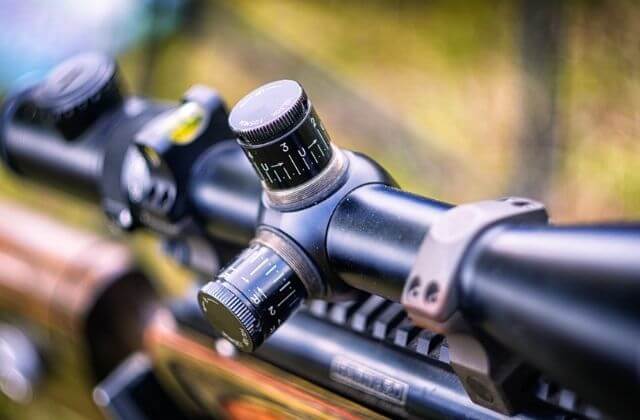
A milliradian, or 1/1000th of a radian, is equal to any unit of measurement at 1000 of that unit. So 1 milliradian is 1 inch at 1000 inches, 1 meter at 1000 meters, 1 mile at 1000 miles, etc. This makes it very quick and easy to calculate at long range.
Being able to quickly understand calls from your instructor or spotter is invaluable when you’re shooting long distances, and the truth is most of the world is using MRAD these days. Mil-dot scopes are the standard for police and military shooters here in the US and are the most common option abroad.
The biggest advantage of either system is being able to not just work by yourself but to learn and shoot with others so that you improve, which means MRAD is generally the best way to go.
That said, if everyone around you uses MOA, you have a slightly tougher decision.
MOA vs MRAD: Contrasts and Comparisons
Using the two systems isn’t that different. The basic process is figuring out your measurement, MOA or mil, at the distance you’re shooting at. For example, if your target is 500 yards away, you know that 1 MOA is about 5 inches.
So if you need to come up 2.5 inches and over 10 inches, then you know you need to come up half an MOA and over 2 MOA. Easy right?
If you’re using an MRAD scope, you know that at 500 meters, 1/10 of a mil (what your adjustments are likely to be on your scope) is 5 centimeters. So if you need to come up 20 cm, you know you need to come up 4/10 of a mil or four clicks on your elevation turret.
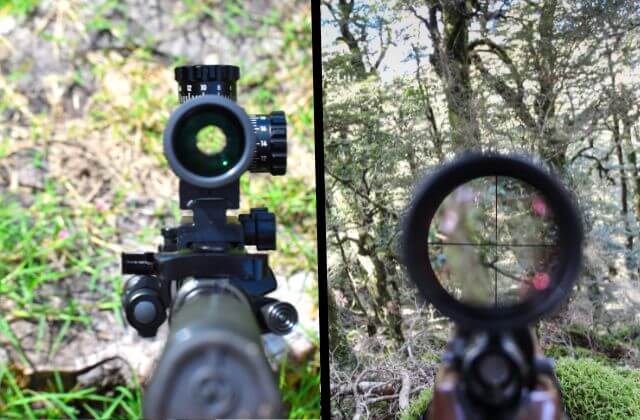
This is really where the rubber meets the road in terms of scope choice because if you are more comfortable with the metric system, then that second example probably sounds ideal to you. Nice even numbers, easy estimations to make, and easy adjustments.
But if you’re an American who doesn’t really use the metric system, then that first example probably sounds a lot easier to you. If so, that’s definitely the direction you’ll probably want to lean when choosing a scope.
When choosing whether to go with an MRAD or MOA rifle scope, things are really subjective and based on shooter preference and what you’re already familiar with.
If you’re already familiar with the metric system and feel confident doing conversions and some light trigonometry in that system, then just learn MRAD. You’ll find it quicker and easier to calculate your elevation adjustments, and the numbers are a lot cleaner.
This will be what most instructors will use and what almost all of your fellow competitors in something like a PRS match will use. Same for hunting guides if you go after big game animals at long ranges.
If you haven’t done any long-range shooting at all, and you aren’t particularly well-versed in either system yet, definitely go the MRAD route. It’ll make your life easier when discussing shooting, working with a new spotter, or learning from online forums and videos.
It’s also just a better system in terms of speed and quick calculations, and you’ll find more rifle scopes available to you in MRAD than you will in MOA, especially if you’re buying imported Japanese, German, or Swiss glass.
With all that said, at the end of the day, the most important consideration is which system you and the shooters around you are most comfortable using.
If your spotter is an MOA person…learn that. If you train at a range that uses Miliradians, use that. It’s all preference at the end of the day, and either method will work fine if you work to learn the system.
If you’re new to long-range shooting and you’re trying to learn, then MRAD is going to be the better option for you, just because that’s what most pro shooters out there are going to be using, and that’s the way the sport (and the industry) are both headed.
If you take a class in long-range shooting or go to an event, you’re almost certainly going to be hearing calls like “come up one mil” and obviously you’re going to need to know what exactly that means.
Now, before you get too worried because you already know MOA and want to keep using it, don’t panic. It’s actually incredibly easy to convert an MOA adjustment into a Milliradian adjustment and vice versa.
All you have to do, if you’re in the field shooting and not doing really precise surveying or geometry for some reason, is multiply your mils reading by 3.5 to get an MOA equivalent, or divide your MOA reading by 3.5 to get a mils equivalent.
This makes it pretty easy to figure out what your shooting instructor means when they say “come up two MOA” but you’re using a milliradian scope.
So, at the end of the day, decide which system you like best and run with it. You won’t have too many problems either way, even though MRAD is a touch simpler to use.
And don’t listen to those people that tell you that mils are more precise. They aren’t. Both are equally precise, so don’t get bogged down with ½ MOA vs 1/10 Mil comparisons. They don’t matter.
Simply decide which one you like best, and then practice, practice, practice.
FAQs
Strictly speaking, neither is better, but MRAD is rapidly becoming the de facto standard and is the most common system in use, especially among professional shooters.
Military snipers in the US use MRAD scopes with milliradian adjustments. This is also the case for most international sniper units, as well as most major police forces.
They are both angular measurements, so they’re measuring the same thing, just in different ways and with different units.
Conclusion
MOA vs MRAD scopes will always be a point of contention and debate, but at the end of the day, they will both get the job done if you (and your spotter) know what you’re doing. Both have pros and cons, and while MRAD certainly seems to be the way the world is going, an experienced MOA shooter can achieve results that are just as good as an MRAD shooter.
We hope this article was able to clear your doubts about MOA and MRAD. The decision about which to pick is purely up to you, because both are equally precise and easy to use. If you have any further questions about this topic or anything related to firearms, feel free to contact us through our website.

